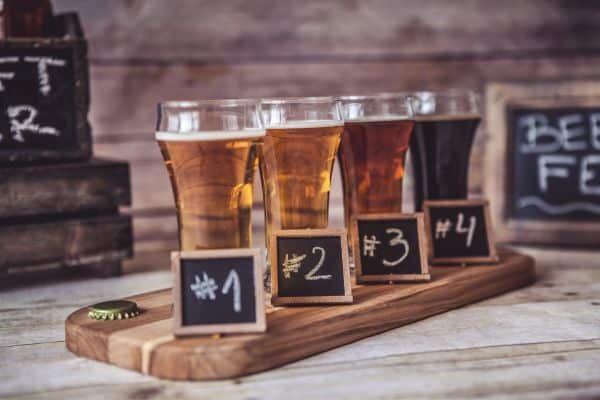With a few basic tools, some patience, and these step-by-step instructions, you can brew and serve your own delicious craft beer right at home.
Homebrewing allows you to create customized beers to suit your own tastes. Making beer from start to finish is rewarding and cost-effective. Follow these steps to brew and serve craft beer from the comfort of your home.
Step by Step …
Sanitize the Keg
– Fill keg completely with sanitizing solution, let sit 10 mins
– Flip keg upside down, let sit 10 more mins
– Push sanitizer out of keg using CO2
Rack Beer into Keg
– Pull pressure relief valve to reduce pressure
– Attach racking hose to liquid out post
– Attach tubing from gas out post to collected sanitizer
– Start flow of beer through racking hose into keg
– Allow keg to fill, shut off CO2
Carbonate the Beer
– Determine target carbonation level from recipe/style
– Measure temperature of beer in keg
– Set CO2 regulator to desired PSI based on temperature
– Turn on CO2 and listen for gas to slow/stop as pressure equalizes
– Agitate keg to speed up carbonation
Serve and Enjoy!
– Attach serving tap or picnic faucet
– Open tap and pour your fresh homebrewed beer
Parts and Components
Understanding the key parts and components involved in kegging homebrew allows you to build the optimal draft system for serving your homemade beer. With sanitization, patience, and the right equipment, you can brew and serve your own craft beer creations at home. Adjust recipes and techniques until you perfect your ideal brew. Enjoy!
Kegs
Available in two types differentiated by their fittings: ball-lock or pin-lock. Choose one and stick with it so you don’t need different connectors/fittings
Disconnects & Hosing
Every keg has two connections. Food-grade tubing connects CO2 and faucet to the quick disconnects. Pigtails and Tubing Sets are a great option.
• One for pushing in CO2 (Gas Disconnect)
• One for dispensing beer (Liquid Disconnect)
CO2 Cylinder
CO2 is used to carbonate and push out the beer.
Homebrewers tend to favor using five-pound tanks as they are easier to transport and store.
10-pound cylinders or 20-pound tanks can be filled for only a few dollars more which is a great option if you dispense a lot of beer and mobility not a concern.
Regulator
Full CO2 tanks hold a pressure of 800 PSI. The regulator screws onto CO2 tank valve and allows you to set your preferred PSI and has a gauge to monitor pressures. Choose from Single or Dual Gauge Regulators.
Faucet
Controls the flow of beer when serving. A picnic tap faucet is the most common option.
O-Rings
Create a tight seal in areas like keg hatch. Replace all if buying used kegs, especially if stained or aromatic. And keep a spare set on hand as these do tend to crack and wear over time.
Want to take the ‘easy route’ in picking out exactly what you need? Check out our wide array of keg kits that are all inclusive so there’s no more guess work in what components go with what. Check them out here: KEG KITS

